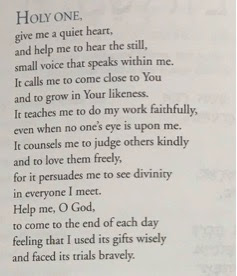Welcome to our pages. Here you can find some basic information on what is Reform Judaism, what type of Reform Jewish activities there are in Finland, and links to sites with more detailed information about Reform Judaism. At the bottom of the page you can also find our email address from which you may ask for further information.
What is Judaism?
To answer the question of “what is Reform Judaism”, it is easiest to start from describing what is Judaism, which in general is poorly understood in Finland. Judaism uniquely combines religious and ethnic identity. There are of course many Jews who are not in any way religious, yet the cultural-historic traditions and values are tightly coupled with Judaism as religion. On the other hand there are no religious Jews who would not at the same time be ethnic Jews, as converts are also fully counted as ethnic Jews.
In Judaism, it is most vital how a person behaves in his/her life. In contrast to some other religions, Judaism does not focus on question of how to save one’s soul. There is neither heaven nor hell in Judaism. It is believed that one’s soul returns to God after death, irrespective of whether one is Jewish or not, since all human beings are considered as children of God. There is a concept of “world-to-come” (Olam Haba), but the question of life after death is not in general pondered on other than when someone asks. Quite often this is one of the first questions non-Jews ask about Judaism, given the primacy of the question in some other religions. This is why we bring up the question up front here. To quench possible curiosity, the keen reader is referred here for further information: https://www.myjewishlearning.com/article/the-world-to-come/ ja https://torah.org/torah-portion/perceptions-5772-kisavo/
Here is pictured Passover Seder plate. Jews celebrate Passover as commemoration of freedom from slavery in Egypt, which is also a recurring theme in Torah “Love the stranger as yourself, for you were once strangers in the land of Egypt”.
Interpretations of Torah, i.e., the five books of Moses, as well as other texts in the Tanakh and Talmud, constitute the basis for Jewish ethics and code of good behavior. The Tanakh, Jewish bible, can be downloaded for free from: https://ferrusca.files.wordpress.com/2016/11/thetanakh.pdf , which contains the texts both in Hebrew and English. Despite small differences the Tanakh is almost identical to the Old Testament of the Christian bible.
There are two versions of Talmud, one written in Jerusalem, which is less used, and the other in Babylon, which is used more commonly. The famous definition of Judaism by Hillel the elder, “That which is hateful to you, do not do to your fellow. That is the whole Torah; the rest is the explanation”, can be found in the Babylonian Talmud. This corresponds to the so-called golden rule found in most of the other major religions in the world.
In this picture there is text from Torah scroll from the fifth book of Moses. In this part, Moses speaks to Israelis about the covenant formed at mount Horeb and about the Ten Commandments.
The 10 Commandments form the core guidelines for good behavior in Judaism. As an example of how the 10 Commandments can be interpreted in today’s society, please see: http://www.aish.com/ci/s/The-10-Commandments-for-Our-Times.html. In Judaism, a good deed in accordance of interpretations of Torah is called a mitzvah. In modern perspective, a mitzvah can be seen as good friendly deeds to others and the environment that are in accordance with Halacha. It is also beautifully expressed in Talmud that ”the highest form of wisdom is kindness”. Concepts such as social justice and environmental protection are very central in modern Judaism.
Other passages in the Tanakh that capture the essence of Judaism include often repeated principle to love stranger as one would love oneself “for you were strangers yourself in Egypt (where you were treated with malice)”. Further information on how Torah is interpreted can be found by following the links at the bottom.
In the pic can be seen a Chanukiah. Chanukah is one of the festivals celebrated in Judaism. For more information on Chanukah, please see: https://www.myjewishlearning.com/article/hanukkah-101/
What is Reform Judaism?
Now that we have answered, though only briefly, the question of what is Judaism, it is time to answer the questions what is Reform Judaism. Reform Judaism is a denomination wherein the Jewish law, Halacha, has been partly reinterpreted. While it is not possible here to produce complete listing of the ways this has been done, we illuminate this below through a few examples. It is important to note that in Judaism there are no hard boundaries between different denominations, as Jews of all denominations are ultimately considered Jews.
As the first example, according to Orthodox (originally termed “rechtgläubig”, i.e., “those who believe in the right way”) tradition use of instrumental music is not permitted in the synagogue. Permitting instrumental music was among the first reinterpretations of Halacha in the early days of Reform Judaism in Central Europe, most notably in Germany. This was based on descriptions in the Torah on the use of instrumental music in the Temple of Jerusalem during services. This way, religious practice was modernized by going back in time to what preceded the state of affairs as consolidated in the Orthodox tradition. Another example involves the question of whether a female can become a rabbi. In Reform Judaism, females are allowed to become rabbis on the basis of passage in the Torah where a woman is described to lead services to mixed group of males and females.
The third example involves the question of who is Jewish. According to Orthodox tradition, a person is Jewish if he is born to a Jewish mother or has converted to Judaism. On the basis of Jewish identity going from father to children in the Torah, Reform Judaism has reinterpreted Halacha to a position where children of also Jewish father are Jewish if the children have been raised Jewish. Here, again, the reinterpretation was justified by going back in time to how things were before the era wherein Orthodox tradition was consolidated.
This is not however the only way Halacha has been reinterpreted in Reform Judaism. Various customs have been dropped on the basis of not having basis in the Torah or on the basis of making it very difficult to function as a member of modern society so as to fulfill other mitzvot deemed more central. As an example of this, in the 19th Century Germany it was ruled that a person may travel to synagogue for Shabbat services by train in case the person lives far away from synagogue. Here, being part of a community was seen as more pertinent than the tradition that limits movement on Shabbat in order for a person to get sufficient rest to carry on his/her duties after Shabbat refreshed.
In the pic an excerpt from Reform Siddur Mishkan T’filah, which beautifully captures the essence of Reform Judaism.
In the USA, Reform is today the largest of Jewish denominations. Liberal Judaism is the closest equivalent of the American Reform movement in Europe, even though it is a bit more conservative than American Reform. In Reform Judaism, one of the central principles is the respect of autonomy of individuals. This means that individual Jews are seen as obligated to study and make informed decisions as to which aspects of Halacha (e.g. dietary laws) the individual sees as binding and how, without others challenging his/her interpretations. Today, there are very few Jewish communities that would coerce individuals to behave in certain ways, but in the historical perspective the principle of autonomy has been radical. This central principle lends support to the individual Jew in finding the best ways and practices via which he/she can be good to him/herself, love others, and work for better environment. Love of the other in one’s everyday life is a central goal in Judaism that when successful leads to the world becoming a better place. Good deeds towards embetterment of the world are in Judaism referred to as “Tikkun Olam”, which goes well with an old Jewish wisdom “even a small amount of light displaces a lot of darkness”.
Reform Judaism in Finland
As in Europe overall, Reform Judaism is tiny in Finland. We are just very few members of Copenhagen Liberal Jewish congregation (http://shirhatzafon.dk/language/en/) who live in Finland and maintain contact with one another and meet on a regularly irregular basis. There are no Reform Jewish congregation in Finland at the moment. The closest ones are in Copenhagen and St. Petersburg. Of these two, at least in Copenhagen there is a conversion program that individuals interested in converting to Judaism, and thus become Jews, can apply into. In Stockholm there is additionally an association for Progressive Judaism that arranges activities several times a year.
Israel is very important to Jews, and we are no exception. We care about the safety of Israel, and support development of Israel as a wealthy state which also in future, in accordance with the vision of Israel’s founders, is a country with strong democracy, freedom of religion, and which lives in peace with her neighbors.
The Western Wall in the Old City of Jerusalem is one of the most sacred of Jewish sites.
Links to www-pages with info on Judaism and Reform denomination
Books that have info on Judaism
Anita Diamant, Choosing a Jewish Life, 1998
Jonathan Romain, Faith and Practice: A Guide to Reform Judaism Today, 1991
Neil Gillman, The Way Into Encountering God In Judaism, 2000
Hayim Halevy Donin, To Be a Jew: A Guide To Jewish Observance In Contemporary Life, 1991
You can reach us from email address: progressivejudaismfinland@gmail.com
Many thanks for your interest and we would be happy to hear from you. Please understand that our answer may be delayed, as our activities are on a voluntary basis and we each are busy with our daily lives.












